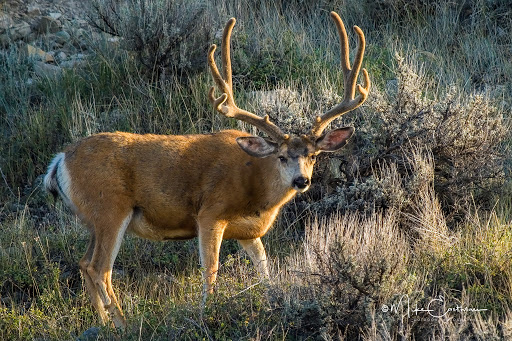
The Wyoming Game & Fish Department is looking at intentionally managing our struggling mule deer herds in the state by considering adding more aggressive elk management and predator management to the mix.
To date, the Wyoming Game & Fish Department has a separate ongoing project “which focuses on improving habitat, adapting hunting seasons and developing science to attempt to conserve deer herds throughout the state.” Thankfully controlling elk herds in certain areas and black bear/mountain lion populations in certain areas are tactics being thrown into the mix.
It is common knowledge that mule deer and elk don’t exist in large numbers together in the same range. Where you find large numbers of elk, you generally won’t find large numbers of mule deer and vice versa.
The same can be said of predators and I’m very glad to hear that targeted management of black bears and mountain lions may increase to help our crashing mule deer herds.
Mule deer are the icon of the West and they are quickly fading from the landscape. As a lifelong mule deer junky, it pains me to see the downward spiral they are on, and it pains me to see how long it has taken to arrive at some of these management decisions. However, it appears there is management light at the end of the tunnel and these tactics are a step in the right direction.
Check out this article for more information. It is worth 5 minutes of your time to read it.
There is an expression that it takes a village to raise a child. Similarly, in the realm of mule deer management, it takes a host of tactics to manage this species to ensure it thrives, not just one management tactic. I’m often asked, “What is the No. 1 thing leading to the decline of mule deer?” My response is, “If there was only 1 thing, we wouldn’t be having a discussion on the decline of mule deer because they wouldn’t be declining.” There are more than a handful of things affecting the mule deer decline across the West.
Mule deer are amazingly adaptable animals, but they can only take so much. It has been the perfect storm over the past 20-30 years leading to their massive population declines.
Don’t get me wrong, I love elk and elk hunting. I just don’t like to see the management of elk to the detriment of mule deer in so many areas. For example, the Bighorn Mountains in Wyoming have historically produced some hellacious mule deer, but recent management in the Bighorns has been for elk and not mule deer. The entire Bighorn range offers no limited quota deer tags, only general tags, while most elk units are limited quota in this location. This leads to a very tightly managed elk herd and a loosely managed deer herd in this range. A more logical deer-to-elk balance needs to exist in my opinion.
What say you?
 Eastmans' Official Blog | Mule Deer, Antelope, Elk Hunting and Bowhunting Magazine | Eastmans' Hunting Journals
Eastmans' Official Blog | Mule Deer, Antelope, Elk Hunting and Bowhunting Magazine | Eastmans' Hunting Journals

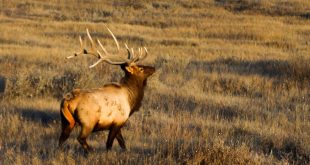
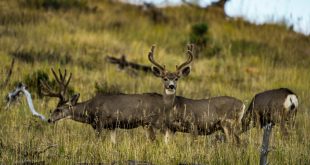
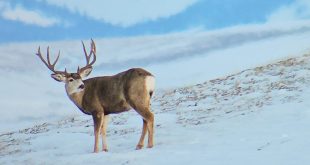
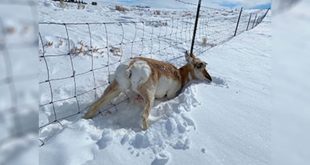
It’s a good point that when you see high elk populations you seem to see lower deer populations.
I’ve thought for a long time the amount of browse available especially on the winter range has been a detriment to deer populations. I’d really like to see forestry management involved in winter range areas such as areas where the NF meets the BLM. It would be great if state game managers could work with the foresters to have a plan to provide browse for mule deer in those areas. From what I’ve read mule deer winter feed is 50% browse, 39% forbs, and 11% grasses. I think the deer need more feed in winter.
Black bears kill very few mule deer. They eat grass, berries, pine nuts and do a lot of scavenging. Cougars kill way less deer than state game agencies would like you to think. I see all the time that they average a deer a week, which simply isn’t true. My home state estimates they have 2,700 adult lions. At 52 deer per year for each lion that would be 140,400 deer per year. The current estimated deer population for my home state is 280,000. Add in winter kill, automobile kills and hunter kills and there would be no deer left in the mountains. Poor game management plays a much bigger role in regards to the dwindling deer populations than state game agencies will ever admit.
Dear Jared, I am old enough to remember when spring count fawn/doe ratios were 1.8:1. Deer herds recovered very quickly and lion numbers were a tenth of what they are now. Colorado had 700k mule deer, Utah 650k. Annual buck harvest was north of 70k, repeated year after year. I invite you to consider what would happen to deer herds with no lions nor coyotes. Also please consider how big the deer herd would get if 140k were added. I believe your lion estimate is conservative and they don’t usually eat grass.
I thought it was shed hunters who were killing the deer. What you say? Game and Fish got it wrong? Again? No way.
I believe you have it right!! My family owns land in the southern Bighorns, i have been hunting both deer and elk there for 30 plus years. 20 years ago we would see 20 – 50 mule deer a day and we killed some nice bucks- today we are lucky to see one in a week of hunting, but lots of elk!! When I spoke to a Wyoming biologist years back he told me it was caused by the decline of some mountain mahogany?? Our place has mostly sagebrush and mixed trees?? Anyway I would love to see the deer come back!!
Mountain mahogany looks like a brushy shrub and deer like it. That’s interesting the biologist was pointing to that years back.
CWD killed ’em all don’t you know. LOL
Solid story and a good starting point on where to begin. Seems mule deer are being killed by a thousand small cuts. Valid point about money and conservation geared toward elk over the last 10-15 years. Mule deer are definitely the forgotten child. Managing critters isn’t easy and hope Wyoming can come up with a multi-approach plan.
Definitely need to get lions and coyote numbers down. When I was growing up in NE Wyoming we had very few of each and the deer numbers were great.